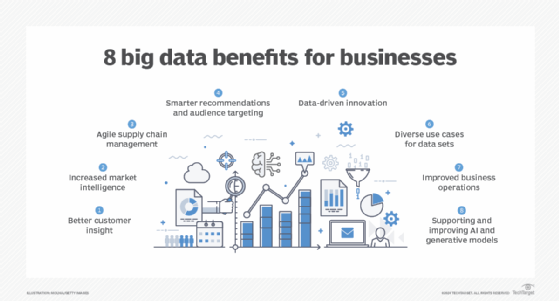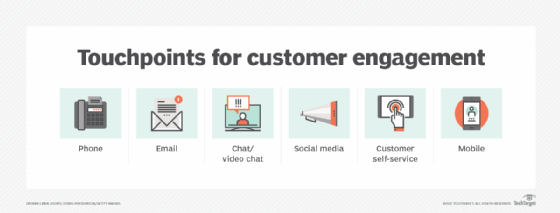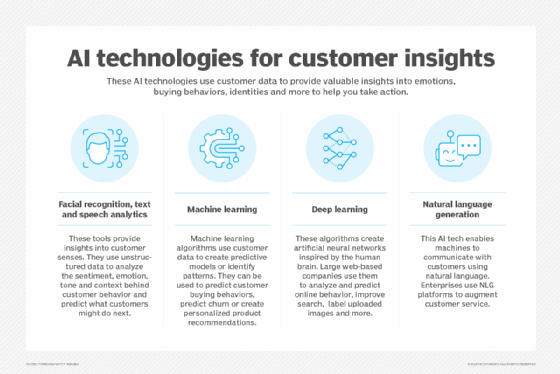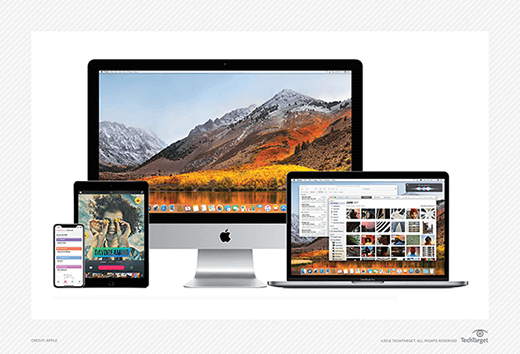What is mindshare (share of mind)?
Mindshare, also known as share of mind, is an approach to marketing that involves attempting to make a company, brand or product the first one that comes to mind when a customer thinks of a particular market.
In the rapidly evolving world of technology and business, one of the most potent tools a brand can use to distinguish itself from the crowd is mindshare.
This elusive yet critical concept is what brands aim to achieve when they want to be the first thing consumers think of in their particular industry or sector. For instance, consider what brand springs to mind when one thinks of smartphones or of electric cars. The brand that one immediately thinks of has effectively captured the mindshare of that market.
Mindshare goes beyond simple brand recognition; it delves into the deep-seated preferences and biases of consumers that dictate their purchase decisions and brand loyalty.
Historical context of mindshare
The concept of mindshare, while seemingly a product of modern marketing terminology, has roots extending back to the 20th century. It is closely intertwined with the rise of mass media and the expansion of advertising methods and channels.
In the early stages of marketing, most brands focused primarily on pushing out their message to consumers via one-way channels like newspapers, billboards and radio broadcasts. The advent of television brought about the Golden Age of Advertising in the 1950s and 1960s, and marketers began to recognize the power of repeated exposure and catchy slogans in imprinting a brand in consumers' minds.
The term mindshare did not gain popularity until the late 1980s and 1990s, when digital technology and the internet became more prominent. As more businesses and industries realized the vastness of the digital landscape, competition for attention heightened. It became apparent that capturing consumers' mindshare was critical in an increasingly saturated market.
The rise of social media in the early 21st century further emphasized the importance of mindshare. As consumers were inundated with countless ads and messages, brands had to innovate to stand out and remain top of mind.
Moreover, as the market moved from a product-centric approach to a more consumer-centric one, brands started focusing on building deeper emotional connections with their consumers, realizing that mindshare goes beyond mere recognition -- it involves being the preferred choice.
In today's digital age, advancements in AI and big data allow brands to target their audiences more effectively and refine their strategies to capture and retain mindshare with even greater precision.

Factors influencing mindshare
The concept of mindshare doesn't exist in a vacuum; it is shaped and influenced by a multitude of factors that vary from brand to brand and consumer to consumer. Some key factors that significantly influence a brand's mindshare include the following:
- Quality of product or quality of service. This is arguably the most critical factor. A brand offering a superior product or service will naturally gain a larger share of mind among consumers. This quality not only pertains to the actual product or service but also extends to after-sales service, customer support and overall user experience.
- Branding and marketing efforts. The visibility of a brand plays a major role in capturing mindshare. This includes both the quantity and quality of a brand's marketing efforts across various channels. Effective branding strategies help create a distinct identity for the brand, making it more memorable and increasing its share of mind.
- Social proof. In the digital world, consumers are more likely to trust a brand if it has positive reviews and testimonials from other consumers. High ratings, customer testimonials and endorsements from influential personalities can significantly boost a brand's mindshare.
- Innovation. Brands that regularly introduce innovative products or services, or use innovative marketing strategies, tend to capture more mindshare. Innovation helps a brand stand out in a crowded market, attracting consumer attention and interest. For example, companies providing AI-driven customer interactions or cutting-edge technologies often stand out in competitive markets.
- Emotional connection. Brands that successfully build an emotional connection with their consumers tend to have a larger share of mind. In today's marketplace, consumers seek brands that align with their values, making this factor even more essential for long-term loyalty.
- Brand consistency. Consistency is crucial for establishing and maintaining mindshare. Brands that present a unified voice, visual style and message across all marketing channels are more likely to be memorable to consumers. This consistency extends beyond logos and slogans -- it encompasses how brands communicate values, respond to feedback and engage with customers on different platforms. Consistency helps reinforce the brand in consumers' minds, ensuring that it's instantly recognizable and builds trust over time.
- Frequency of interaction. The more often consumers interact with a brand, the more likely they are to remember it. This interaction can be through product usage, advertising, social media engagement, customer support and more.
Achieving a larger share of mind is a complex task that requires a strategic blend of high-quality products or services, effective marketing, exceptional customer experience (CX) and continuous innovation, all of which should ideally culminate in a deep emotional connection with consumers.
The role of CX in building mindshare
CX is integral to mindshare as it directly impacts how customers perceive and remember a brand. Positive experiences foster a sense of trust and loyalty, making customers more likely to recall the brand and recommend it to others. Brands can improve CX by doing the following:
- Personalizing interactions. Tailoring experiences to individual customer needs and preferences helps create a lasting positive impression.
- Prioritizing responsiveness. Quickly addressing customer inquiries or complaints demonstrates a commitment to customer satisfaction.
- Creating seamless omnichannel experiences. Ensuring a smooth experience across all channels (in-store, online, social media) builds brand familiarity and reinforces positive associations.

Measurement of mindshare
An old adage goes, "What gets measured gets managed." That applies to mindshare as well, but measuring mindshare is not as straightforward as measuring tangible business metrics like sales or revenue.
It requires the use of multiple indirect methods to gauge the extent of a brand's presence in consumers' minds. Some commonly used ways to measure mindshare include the following:
- Surveys and polls. One of the most direct ways to measure mindshare is to get feedback from consumers themselves. Surveys and polls can be conducted where consumers are asked to name the first brand that comes to their mind in a specific product or service category. The brand that gets mentioned the most has the highest mindshare. This is known as unaided brand recall.
- Social media analysis. The analysis of social media data is another effective way to measure mindshare. Brands can monitor platforms like Instagram, X (formerly Twitter) and Facebook to track mentions, engagement and sentiment. A higher number of positive mentions usually indicates higher mindshare.
- Market research. Market research firms often conduct studies that measure various aspects of brand health, including mindshare. Studies could involve more in-depth surveys, interviews or focus groups that explore consumers' awareness and perceptions of different brands.
- Search engine data. Search engine data can provide valuable insights into mindshare. For example, the volume of searches for a brand or its products can indicate the level of interest and awareness among consumers.
- Share of voice. SOV is a metric that represents a brand's share of the conversation in its industry. It measures how much a brand is being talked about compared to its competitors. A higher SOV usually correlates with higher mindshare.
- Net promoter score. NPS measures the willingness of customers to recommend a company's products or services to others. It is used as a proxy for gauging a customer's overall satisfaction with a company's product or service and the customer's loyalty to the brand. A high NPS score may suggest a strong mindshare.
AI and machine learning technologies can now assist in monitoring and analyzing these indirect methods, providing deeper insights into consumer behavior and brand sentiment.

Using data and analytics to improve mindshare
Data analytics tools, such as social listening platforms and website analytics, can provide real-time insights into how consumers perceive a brand. Tracking consumer sentiment, engagement rates and brand mentions, can enable companies to adjust their strategies to improve mindshare.
For example, identifying which content resonates most with audiences or understanding where brand visibility is lacking can guide more effective campaigns. This data-driven approach enables brands to be more adaptive and responsive to market shifts.
Increasing mindshare in a competitive market
Achieving significant mindshare in a crowded marketplace requires a targeted approach. Here are some effective strategies:
- Consistent brand messaging. Maintaining a unified, consistent message across all platforms and touchpoints ensures that consumers have a clear, lasting impression of the brand.
- Engaging content marketing. Providing valuable content that resonates with target audiences can increase visibility and brand recall. Educational resources, storytelling, and thought leadership pieces help make the brand memorable.
- Strategic partnerships and sponsorships. Partnering with popular brands, influencers, or events can enhance brand visibility and association in consumers' minds.
These strategies help brands not only enter the minds of consumers but also stay relevant in an ever-evolving market landscape.
Mindshare vs. market share
Mindshare and market share are two key metrics that help businesses gauge their performance relative to their competitors. However, they measure distinct aspects of a brand's market presence and influence.
Mindshare refers to the measure of consumer awareness of a brand or its products. It reflects the mental real estate a brand occupies in a consumer's mind. A brand with high mindshare is typically the first one that comes to a consumer's mind when thinking about a specific product category.
Market share is a tangible business metric that measures a company's sales in relation to the total sales in its industry. A company with a high market share sells more of its products or services than any of its competitors do. Market share provides a quantitative understanding of a company's dominance in the market.
While they measure different aspects, mindshare and market share are often closely connected. Brands with high mindshare tend to have a larger market share as consumers are more likely to purchase from brands they recognize and trust.
However, it's possible for a brand to have a high mindshare (due to strong branding and marketing efforts), but a low market share if its products or services do not meet consumers' expectations or are priced too high.
Similarly, a company might have a high market share due to competitive pricing or a wide distribution network, but lower mindshare if its marketing efforts are insufficient or ineffective. In an ideal scenario, brands should aim for a balance, focusing on increasing both mindshare and market share for sustainable success.
Mindshare and brand equity: Understanding the connection
Mindshare and brand equity, while related, differ in focus. Mindshare represents immediate brand recall, while brand equity reflects the overall value and perception of the brand in the marketplace. Brands with high mindshare often build brand equity faster, as consistent visibility and positive associations drive loyalty.
However, brand equity requires more than just visibility -- it includes quality, trustworthiness and value for money. Investing in mindshare is a first step, but for long-term success, brands should also focus on building strong brand equity.
Prominent examples of mindshare in the real world
Understanding the concept of mindshare and its relationship with market share becomes more tangible when we examine real-world examples. These case studies of brands show how they have successfully captured a significant share of mind and how that influenced their market share.
Apple
Apple Inc. serves as a classic example of a company that has managed to capture a significant share of mind in the technology sector. When consumers think about innovative, high-quality smartphones or laptops, Apple is usually one of the first brands that come to mind.
Through a combination of cutting-edge product design, highly effective marketing strategies and a relentless focus on customer experience, Apple has created a strong mindshare among consumers worldwide.
This strong mindshare has translated into a large market share as well. As of the start of 2024, Apple held approximately 16% of the global smartphone market. Despite not having the largest market share, Apple consistently leads the industry in terms of profitability, largely thanks to the premium brand image it has cultivated.
Apple is an example of a company that has been able to translate significant mindshare in the technology sector into a large market share.

Tesla
Tesla offers an interesting case study where mindshare and market share don't align neatly. Tesla, under the leadership of Elon Musk, has dominated the mindshare when it comes to electric vehicles (EVs). Its focus on innovation, high-performance vehicles and Musk's own personal brand have contributed to Tesla often being the first brand consumers think of when it comes to EVs.
However, in terms of global market share, Tesla's position isn't as dominant. As of Q2 2023, Tesla held around 20% of the global EV market share. It's worth noting, though, that Tesla's strong mindshare has helped it maintain a leading position in the market despite increasing competition.
These case studies underline how mindshare can influence market share. However, as seen in the case of Tesla, a high mindshare does not always guarantee a corresponding high market share. Both metrics are vital for a brand's success and should be cultivated concurrently. The next section explores some of the criticisms and limitations of the concept of mindshare.
Criticism and limitations of mindshare
While the concept of mindshare offers valuable insights into a brand's position in consumers' minds, it is not without its criticisms and limitations. Understanding those perceived shortcomings can provide a more balanced perspective and help in applying the concept more effectively.
- Difficulty in measurement. Accurately measuring mindshare is challenging due to its intangible nature. It relies on indirect metrics like surveys, social media mentions and search engine data, all of which have their own limitations and potential for bias. Additionally, measuring mindshare on a global scale can be particularly challenging due to cultural differences and varying brand perceptions.
- Not always linked to sales. A high mindshare doesn't necessarily translate to high sales or market share. A brand may be top of mind for consumers, but if its products or services are priced too high, or if they do not meet consumers' needs or expectations, mindshare may not lead to purchases.
- Neglect of other important factors. Focusing too much on mindshare may cause a brand to overlook other critical aspects of its business, such as product quality, customer service and competitive pricing. A comprehensive approach to marketing and business strategy should consider these and other aspects alongside mindshare.
- Short-term vs. long-term impact. Some critics argue that mindshare is more about creating immediate recognition rather than long-term customer loyalty. A catchy ad campaign might temporarily boost a brand's mindshare, but without ongoing efforts to maintain quality and engage customers, the increase in mindshare may not last.
- Potential for negative mindshare. Mindshare can be negative as well as positive. A brand might be prominent in consumers' minds for the wrong reasons, such as a public scandal or a product failure. Brands must therefore strive not just for high mindshare, but for positive mindshare.
- Ad fatigue. With so many ads online, consumers can become desensitized, making it challenging for brands to stay memorable.
- Trust and transparency. In an era where authenticity is valued, brands that are transparent and build trust are more likely to capture and retain mindshare.
- Rapidly evolving trends. The fast pace of digital trends means brands must adapt quickly to stay relevant in consumers' minds.
Despite the criticisms and limitations, the concept of mindshare remains a valuable tool for businesses to gauge their position in the market and the effectiveness of their branding and marketing strategies.
When combined with other metrics like market share and customer satisfaction, and when applied thoughtfully, mindshare can contribute to a comprehensive understanding of a brand's performance and influence.
See why businesses should prioritize customer retention and explore the benefits of customer experience management.








